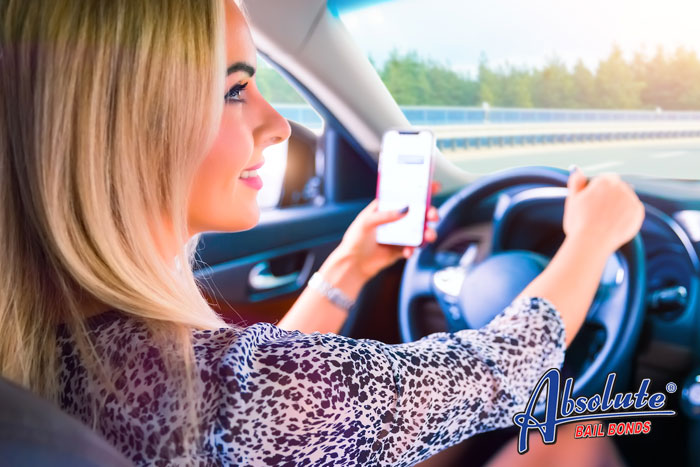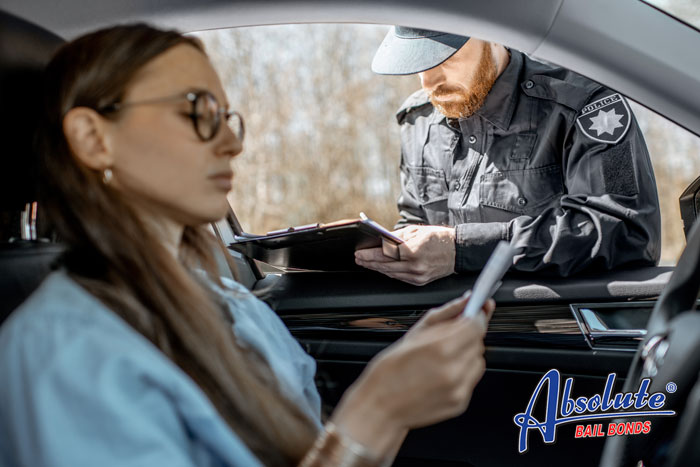
California’s 3 Most Common Driving Infractions
Every single day, hundreds of drivers throughout the state of California receive traffic violations. While obtaining a ticket for many things is possible, some traffic violations are more common than others.
Speeding
While there aren’t any hard stats showing how many speeding tickets are written by California patrol officers daily, it’s fair to say that speeding tickets make up the bulk of California’s traffic violations.
The exciting thing about speeding tickets is that many drivers, especially younger drivers, don’t think they are a big deal. Drivers don’t understand a speeding ticket’s long-term financial impact on their lives.
The first thing to consider is the cost. The base fee of a California speeding ticket is $35-$200, but that isn’t all you’ll have to pay. There are also fines, fees, and costs connected to the ticket. That $35 ticket will cost you about $150 or more when all is said and done. The faster you are going, the more the speeding ticket will cost. In addition to the traffic ticket fees, you will also see an increase in your car insurance, which could be years before your premiums decrease.
Reckless Driving
California drivers have a severe problem with reckless driving. Reckless driving tickets are issued when a driver is driving in a manner that displays a disregard for your safety as well as the safety as others. In California, many reckless driving incidents involve road rage.
Reckless driving in California isn’t a laughing matter. Depending on the circumstances surrounding the incident, it’s possible that the issue won’t be treated as an infraction, but rather a misdemeanor. If someone is killed in a reckless driving incident, the situation could be handled as a felony.
Using a Cell Phone While Driving
Despite all the warnings, people continue to use their cell phones while driving. Since this has led to several traffic accidents throughout the years, California has adopted strict cell phone driving violations. While you can use a hands-free setup while driving, you’re not allowed to use the phone traditionally. You’re also not allowed to text while you’re driving. In addition, if you are caught driving and using your cell phone, you will receive a negligent operator point on your driving record for each violation in 36 months.

How Parking Tickets Impact your Driving in California
Very few drivers in California haven’t received at least one traffic ticket. In most cases, the driver sputters a little bit, pays the fine, and moves on with their life. However, some California drivers have racked up lots of parking tickets.
There are two reasons drivers fail to pay for their tickets. First, they simply don’t have the money needed to cover the fine. The second, and more common reason is that they don’t think parking violations are a big deal and simply ignore them.
If you fall into the second category of drivers, there are a few things you should know about outstanding parking tickets in California. California’s government depends on the revenue they collect from tickets. They are determined that you should pay the fines connected to the tickets. The first step the government does is increase the amount of money you must pay. The older the outstanding parking ticket is, the heavier the fine is.
If the fine remains unpaid, the court doesn’t beg you to pay the ticket. Instead, the suspend your drivers license. Once this happens, the only way you’ll regain your driving privileges is by paying the tickets as well as any fees connected to reinstating your driver’s license. Before you consider driving with a suspended California driver’s license, consider that doing so is a misdemeanor. If you’re caught, you’ll be arrested. If you get into an accident, the insurance company will likely use the fact that you weren’t supposed to be legally driving as an excuse not to pay out on the claim.

The Dangers of Distracted Driving in California
Everyone always talks about how horrible drunk driving is but far less is mentioned about the dangers and repercussions of distracted driving, which is as dangerous and even more common than drunk driving.
Distracted driving in California isn’t a new thing. For as long as people have been getting behind the wheel of automobiles, there have been distracted drivers.
Examples of distracted driving include:
- Daydreaming
- Arguing with passengers
- Rubbernecking
- Trying to pick up a candy bar you’ve dropped
- Changing radio stations
- Using your cell phone
Distracted driving can result in a number of things going wrong. A single second of distracted driving can result in:
- Weaving in and out of your lane
- Striking another car/pedestrian
- Missing a road sign
- Running a red light
Over the past twenty years or so, distracted driving has become a much bigger problem. Data collected by the National Highway Traffic Safety Association indicates that distracted driving results in approximately 1,000 injuries every single day and approximately 9 deaths a day. Many of these distracted driving accidents involved a cell phone.
In California, when someone is pulled over for distracted driving and issued a citation, the ticket usually doesn’t say distracted driving, even though that’s usually the cause of the incident. The ticket usually states the effect. For example, if you were playing with your dog who was in the shotgun seat and run a red light, the ticket will likely state reckless driving or failure to yield rather than distracted driving.
If your distracted driving results in an injury or death to another person, the citation may be the least of your worries. When someone is hurt or killed as a result of a distracted driving episode, you could find yourself acting as the defendant in a civil case.
In an effort to lower the number of distracted driving incidents in California, the state has introduced the Just Drive campaign. The idea of the Just Drive campaign is to educate/remind drivers about the dangers of using a cell phone while you’re behind the wheel. Everybody involved in the campaign hopes that the program will remind drivers about how deadly answering a single text or taking a long call can be.
California’s “Just Drive” campaign is quite similar to earlier efforts to reduce the number of drivers who use their cell phones while they’re behind the wheel, but this campaign is geared specifically towards younger drivers who are between the ages of 16 and 24.
In California, you’re not allowed to have your cell phone in your hand while you’re driving. While everyone would prefer it if you simply didn’t use your cell phone at all during your commute, you are allowed to use it provided it’s set to hands-free mode, mounted on your dash or windshield, and can be turned on and off by a single finger touch.
The best way to avoid being the cause of a distracted driving incident is to keep your eyes and mind on the road.

Updating Your California Driver’s License
Your driver’s license not only proves that you’re legally allowed to drive in California, but it also serves as your main source of identification. It’s important that all the information that appears on your driver’s license is current.
You should already know that you’re not allowed to drive on an expired driver’s license in California.
According to the California DMV, changing your address on your driver’s license should be one of the first things on our agenda following your move. It doesn’t matter if you’re moving to California from another state or if you’ve simply moved across the street, you have 10 days to contact the DMV about the change in residence. That really isn’t much time, so it’s in your best interest to pencil it into your schedule as one of the things you should do before you start unpacking.
Even though the California DMV doesn’t give you much time to change the address on your driver’s license, they have taken steps to make it as simple as possible.
In most California counties, you have three options for changing your address on your license:
- You can visit your local DMV office
- You can mail in a change of residence form to the DMV
- You can go online and fill out a virtual form which the DMV will file
While all options are good and legal, the benefit connected to going to the actual DMV office is that they will give you a temporary license that will have your new address on it. That way, if you do get pulled over and ticketed, the ticket information will go to your new address rather than your old one.
If you fail to contact the DMV about the change of address on your driver’s license in a timely manner, you may face a small, additional fee when you finally get around to completing the chore. While it’s unlikely that you’ll get a ticket for having the wrong address on your license (assuming it’s not expired) if mail concerning the ticket is sent to the wrong address, it could result in some substantial late fees getting attached to any ticket for moving violations the officer did issue.
The biggest risk connected to not updating your address on your driver’s license could be that it causes problems with your insurance company, which may use the failure to change the information as a reason to delay paying when you file a claim. They may even decide to drop your policy altogether.
When all is said and done, it’s best to simply take a few minutes and update your address.

